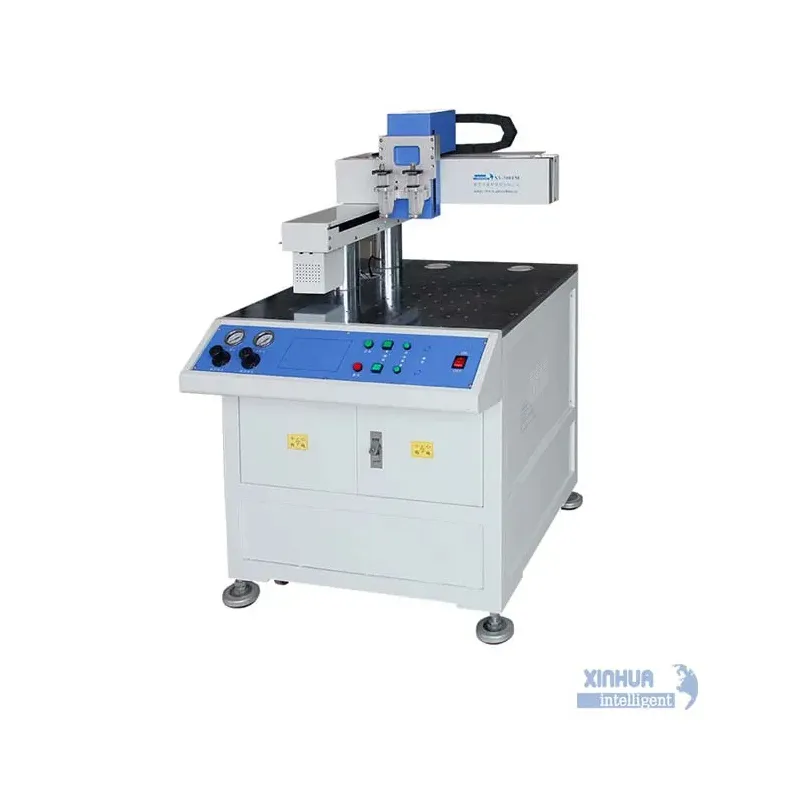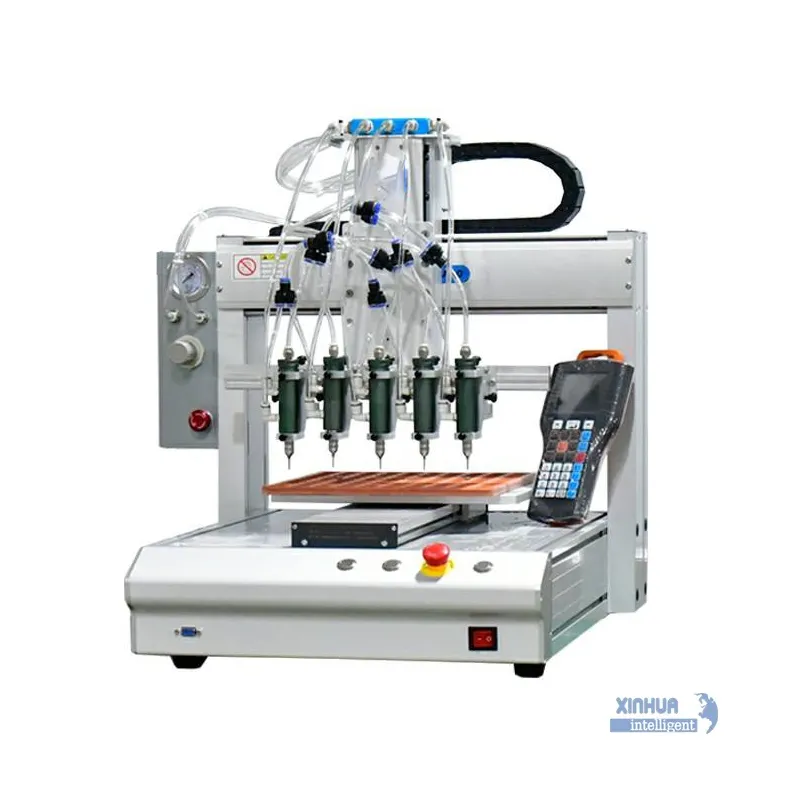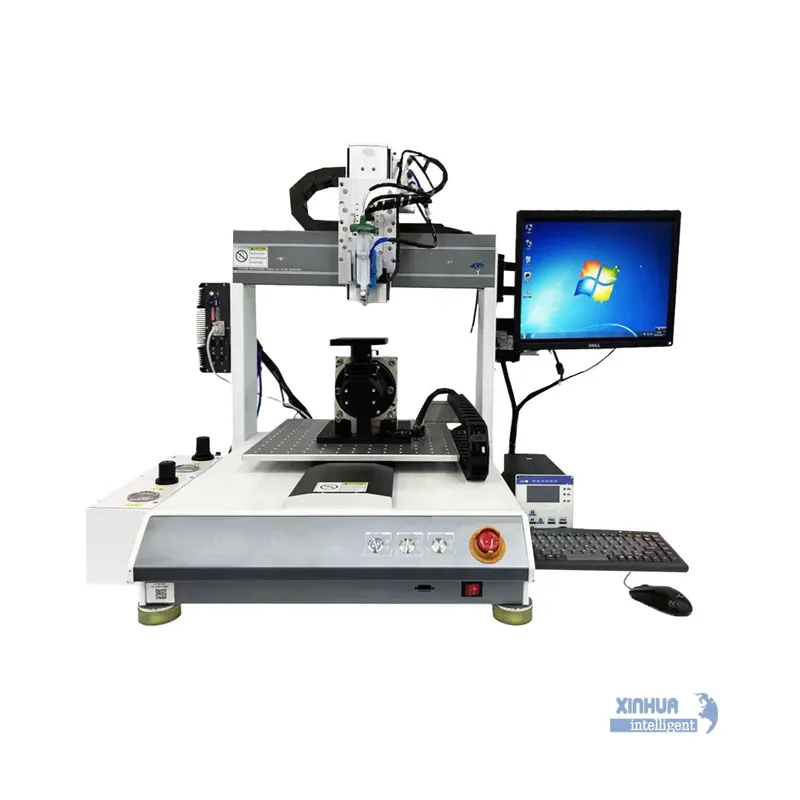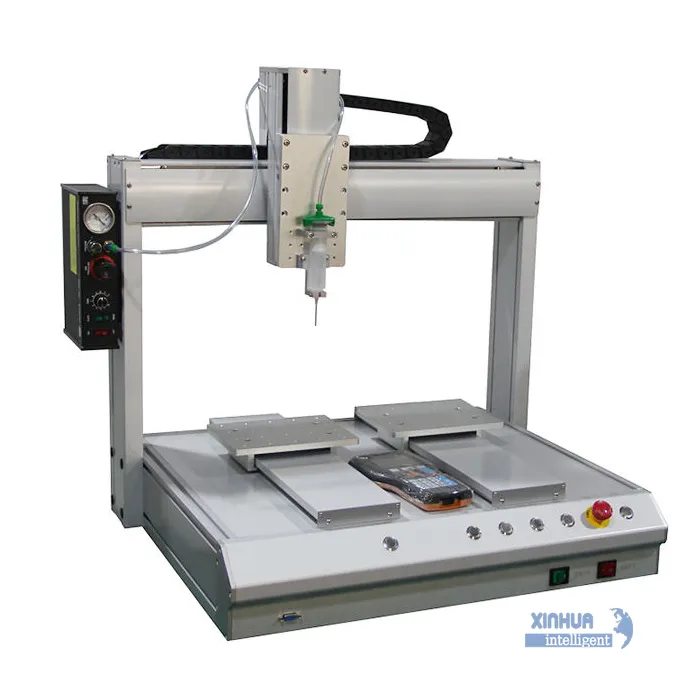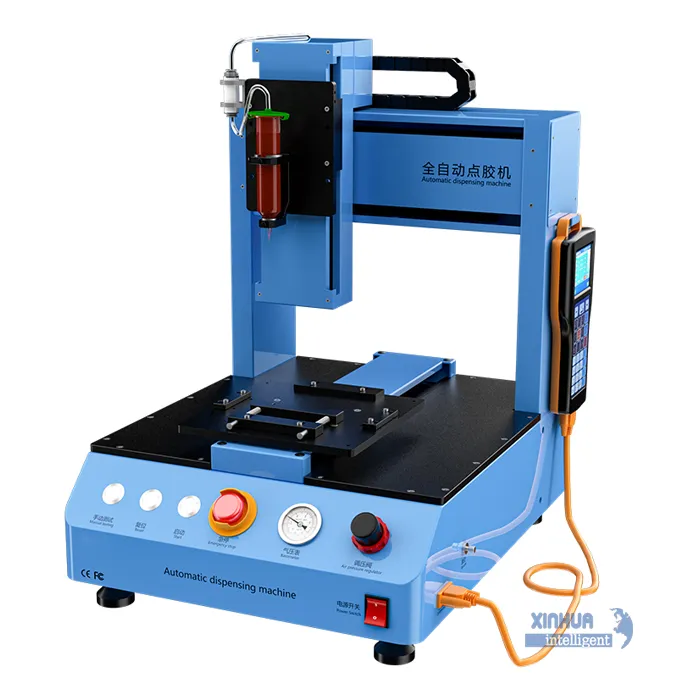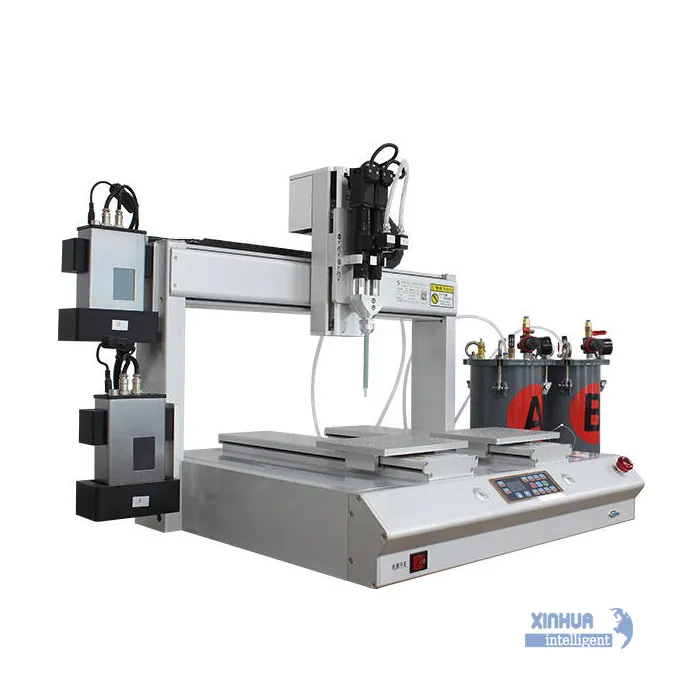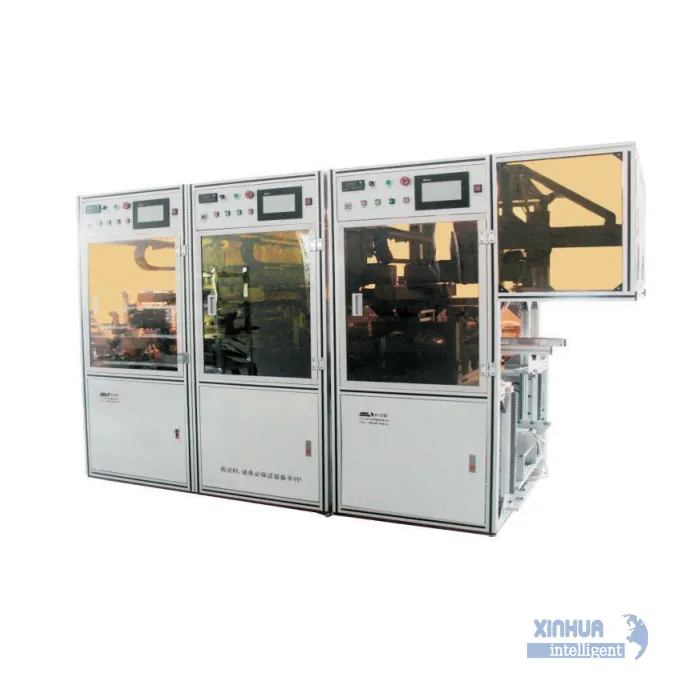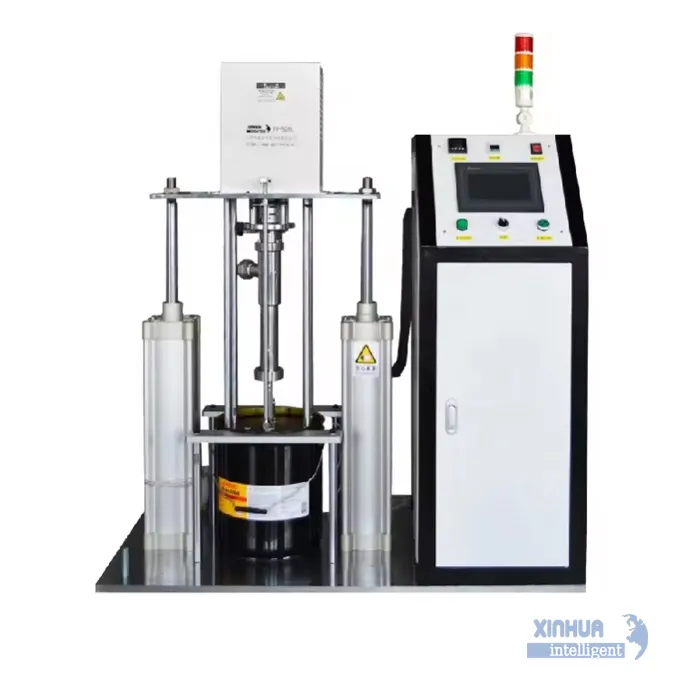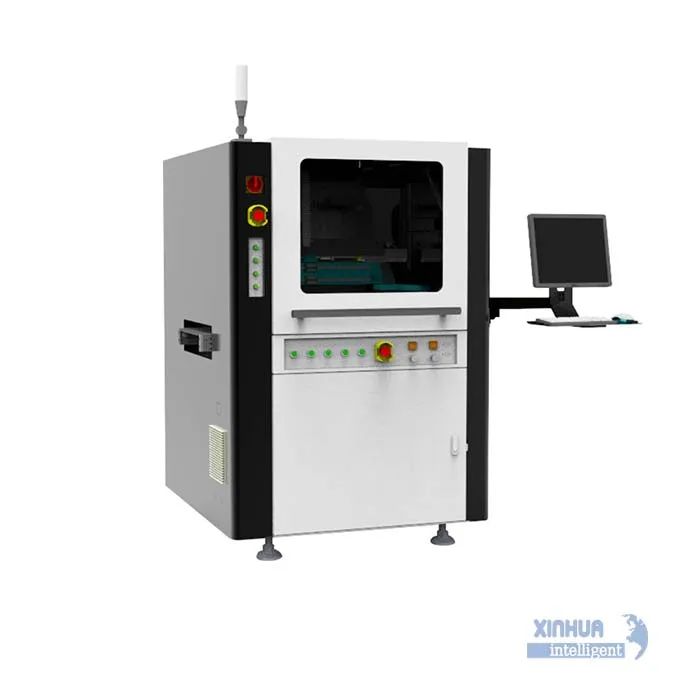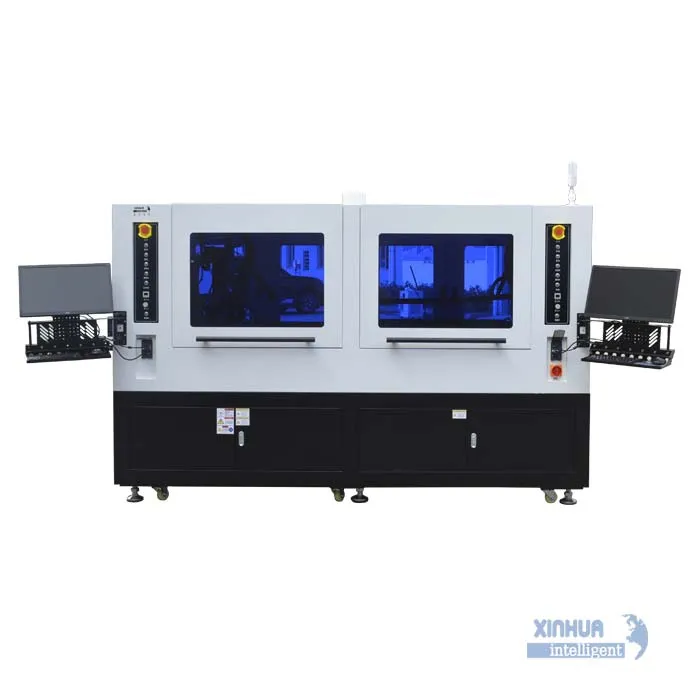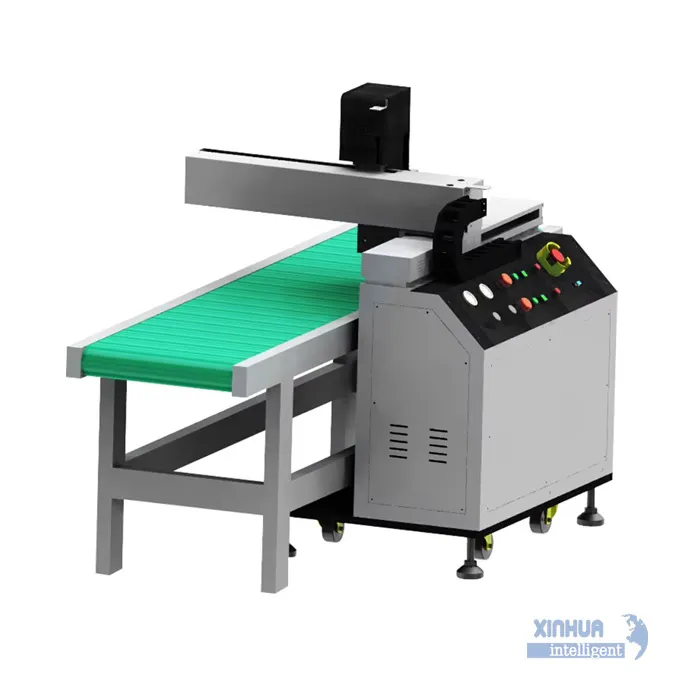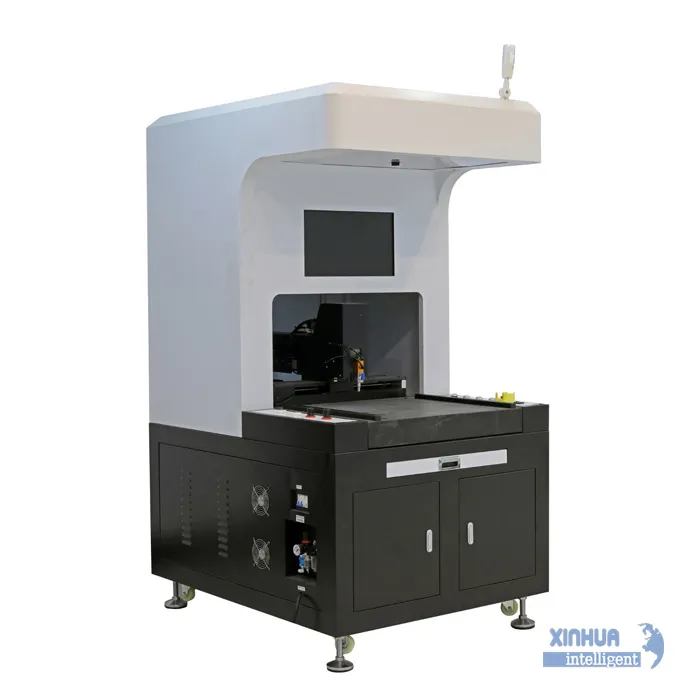A glue dispensing machine (also called an adhesive dispenser or resin dispenser) is an automated or semi-automated device designed to control the amount, speed, and position of glue applied to a workpiece.
It’s widely used in electronics, automotive, packaging, medical, and other manufacturing industries
where high precision and consistency are required.
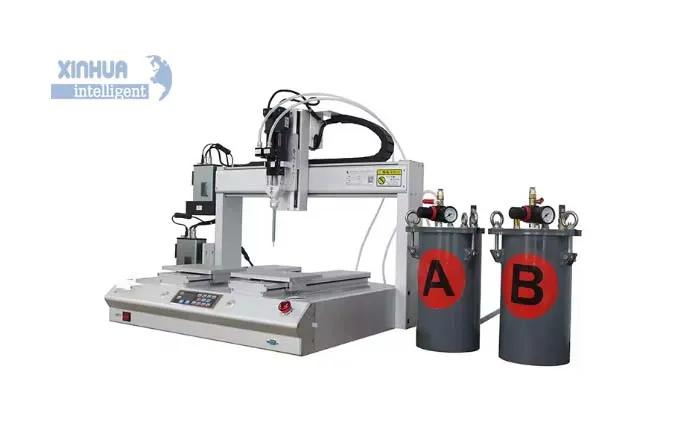
1. Basic Working Principle
The machine works by controlling the flow of glue through a dispensing nozzle, using air pressure, mechanical pumps, or screw-driven mechanisms. The goal is to accurately deposit a predetermined volume of adhesive onto a target surface.
The process typically involves four key steps:
| Step | Description |
|---|---|
| A. Glue Feeding | Adhesive is supplied from a container, syringe, or cartridge. |
| B. Pressure / Pump Control | The machine uses air pressure, gear pumps, peristaltic pumps, or screw valves to control glue flow. |
| C. Dispensing & Positioning | A nozzle deposits glue precisely at programmed positions, often controlled by CNC or robotic arms. |
| D. Curing / Solidifying | Depending on the adhesive, heat, UV light, or ambient air may be used to cure the glue. |
2. Key Components & Their Roles
- Glue Reservoir → Stores adhesive in a tank, cartridge, or syringe.
- Pressure System or Pump → Controls glue flow (air pressure, gear pump, peristaltic pump, or screw drive).
- Dispensing Valve / Nozzle → Regulates droplet size and ensures precision.
- Control System → Sets parameters like time, speed, and volume.
- Motion System → Uses CNC or robotic platforms for multi-axis positioning.
3. Working Methods
Glue dispensing machines generally use three common working principles:
(1) Time–Pressure Dispensing (Most Common & Cost-Effective)
- Uses compressed air to push glue from a syringe or tank.
-
The volume depends on:
- Air pressure level
- Opening time of the valve
- Viscosity of the adhesive
- Applications → Electronics assembly, PCB coating, simple product bonding.
Advantages: Low cost, easy to operate.
Disadvantages: Less accurate for highly viscous or temperature-sensitive glues.
(2) Volumetric Pump Dispensing (High Precision)
- Uses mechanical pumps (e.g., screw, gear, or piston pumps) to meter a fixed volume of adhesive.
- Glue flow is independent of viscosity changes, making it more stable and accurate.
Applications: Medical devices, automotive electronics, precision assembly.
Advantages: High accuracy, stable performance.
Disadvantages: Higher cost and more complex maintenance.
(3) Jet Dispensing (High Speed & Non-Contact)
- Uses a high-speed piezoelectric or pneumatic jet valve to shoot glue droplets without touching the surface.
- Suitable for ultra-fine, high-speed, and tiny-volume dispensing (e.g., 0.1 μL per shot).
Applications: Microelectronics, LED packaging, semiconductor bonding.
Advantages: Ultra-fast, non-contact, high precision.
Disadvantages: Expensive, requires precise calibration.
4. Process Control & Automation
Modern glue dispensing machines integrate sensors and controllers to ensure accuracy:
- Closed-Loop Feedback: Monitors pressure, temperature, and volume in real time.
- Vision Systems: Uses cameras to inspect and correct glue placement.
- Multi-Axis CNC / Robotic Control: Automates complex patterns for large-scale manufacturing.
5. Example Workflow
Here’s how a typical automatic glue dispensing process works:
- Load Glue → Operator fills the reservoir.
- Set Parameters → Input pressure, dispensing time, droplet size, and motion path.
- Position Workpiece → Place the PCB, product, or part on the fixture.
- Automatic Dispensing → Machine dispenses glue based on programmed patterns.
- Inspection & Curing → Built-in vision systems check glue quality, followed by curing.
6. Advantages of Automatic Glue Dispensing
- High precision & repeatability
- Consistent adhesive volume
- Faster production speeds
- Less material waste
- Lower labor costs
- Compatible with automation and robotics
Summary
The working principle of a glue dispensing machine is based on controlled adhesive delivery using pressure, volumetric pumps, or jetting technology, combined with automated positioning systems for high accuracy and efficiency.
- Time-pressure systems → Cost-effective, suitable for basic tasks.
- Volumetric systems → High precision for industrial applications.
- Jet dispensing → Ultra-fast and contactless for microelectronics.

